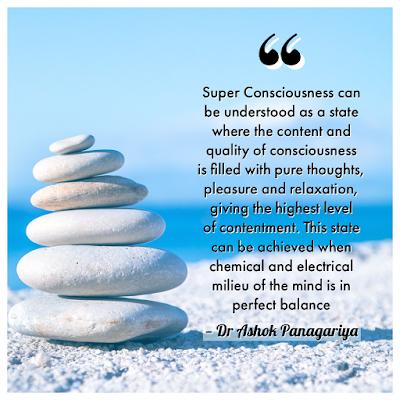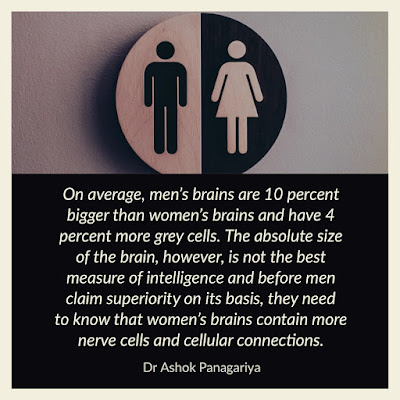Yoga isn’t mastering flexibility. It is about transformation and finding a connect with the universe
From what is now seen on television channels and propagated by fitness ‘gurus’ and celebrities, one would be made to believe one can nail yoga by mastering postures and increasing their flexibility and strength. But that’s far from reality. In fact, it is a market-driven version of traditional yoga — more dramatic and highly fascinating, customised to appeal to the uninitiated.
 Traditional yoga, on the other hand, seeks to initiate transformation in the person by helping them discover self and, at the same time, connecting with the universe as one attempts to use the huge potential of the brain. While we speak of using the brain’s potential to synchronise self with the universe, it’s worth mentioning how the brain is a unique organ in the human body. While it makes up for only 2 percent of body weight, it receives 20-25 percent of cardiac output, consumes 20 percent of the body’s oxygen and glucose supplies, utilises 50 percent of the overall gene pool and has neurons equal to the number of stars in the ‘Milky Way’.
Traditional yoga, on the other hand, seeks to initiate transformation in the person by helping them discover self and, at the same time, connecting with the universe as one attempts to use the huge potential of the brain. While we speak of using the brain’s potential to synchronise self with the universe, it’s worth mentioning how the brain is a unique organ in the human body. While it makes up for only 2 percent of body weight, it receives 20-25 percent of cardiac output, consumes 20 percent of the body’s oxygen and glucose supplies, utilises 50 percent of the overall gene pool and has neurons equal to the number of stars in the ‘Milky Way’.
This amazingly complex structure is also the greatest generator of electrical energy. The left hemisphere of the brain is mainly responsible for language and logistic skills. The right hemisphere, which initiates the emotions of pleasure, relaxation, meditation and sexual orgasm, is also dominant in taking the individual to higher levels of consciousness. It plays a key role in connecting the individual to space as a step towards furthering the relationship with all dimensions of the universe.
The recognition of Indian Yoga by the United Nations and the declaration of June 21 as International Yoga Day has drawn worldwide attention towards it, after more than a century of historical research.
Georg Feuerstein, known globally for his work and books on Yoga, says that archaeologists discovered the Indus Valley Civilization at the banks of River Saraswati, a culture extended over 3,00,000 square miles, perhaps the largest civilization in early antiquity. In Search of the Cradle of Civilization: New Light on Ancient India, a book co-authored by Feuerstein, says that the Vedic civilization grew out of the ‘Indus-Saraswati civilization’ and that the Vedas could not have been a part of nomadic culture. The Rig-Veda depicts various yoga scriptures indicating thereby that the yoga is the product of a mature civilization. In the aforementioned book too, the authors argue that the Rigveda describes society native to India. Subsequently from this era, new offshoots of Jainism and Buddhism evolved to attain spirituality and bliss through yogic meditation. Credit must go to Feuerstein for his beautiful historical categorisation of yoga into Vedic Yoga, Pre-classical Yoga, Classical Yoga, Post-classical Yoga and Modern Yoga, respectively, in the “march of history”.
Vedic Yoga, also known as Archaic yoga, reportedly connected the ritual life of sacrifice of ancient Indians to the purpose of moving closer to atma or the Spirit, in an attempt to reach parmatma. By keeping their minds focused, they would transcend the highest level of virtues of the mind and connect to the universe. This indeed led to the genesis of yoga, as many of these vedic yogis — seer or rishi — by connecting their mind with the universe developed a spiritual vision, attaining extra sensory perceptive powers like intuition, telepathy and learning beyond human comprehension. Interestingly, the concept of ‘3rd’ eye in human beings has found some support with the availability of scientific data on existence DMT (N- dimethyltryptamine), the “spirit molecule” in pineal gland, earlier described by Descartes as the seat of the soul.
Pre-classical Yoga finds mention in the Upanishad, even before the era of Mahaveer or Gautam Buddha (500 BC). Incidentally, Geeta was also written around 500 BC. Classical Yoga, which expounds Raja-Yoga, is the sage Patanjali’s Yoga-Sûtra that was written somewhere in the 2nd century AD. He described what is termed as philosophical dualism, which scientist Descartes reproduced as the dualistic theory of brain and mind — brain being the physical structure and mind lying within the soul. Present neurological science, of course, challenges this and postulates that the mind is within the brain.
Post-classical yoga (or modern yoga), which lays emphasis on the ultimate unity of everything, is based on the teachings of Vedanta. The new breed of yoga masters from the post-classical phase put the body at the centre (as against the universe as postulated by their predecessors). With this, they attempt to exploit the hidden potential of the brain and mind axis to develop a unitary concept of brain, body and mind for rejuvenating the body and prolonging life.
They exploited the yogic technique of physical posturing with Pranayam to energise the physical form (body) and converting the brain’s neuro-chemistry to reach higher evolution. Swami Vivekanand, a proponent of modern yoga, was trained by Ramkrishan Paramhans. His yogic sermons brought the West closer to the East, and gave them an opportunity to peep into the rich cultural heritage of India and bring them closer to themselves.
With the pandemic appeal of yoga, one would recollect the saying of Einstein, the greatest physicist of this century—“Science without religion is lame and religion without science is blind”.
 Traditional yoga, on the other hand, seeks to initiate transformation in the person by helping them discover self and, at the same time, connecting with the universe as one attempts to use the huge potential of the brain. While we speak of using the brain’s potential to synchronise self with the universe, it’s worth mentioning how the brain is a unique organ in the human body. While it makes up for only 2 percent of body weight, it receives 20-25 percent of cardiac output, consumes 20 percent of the body’s oxygen and glucose supplies, utilises 50 percent of the overall gene pool and has neurons equal to the number of stars in the ‘Milky Way’.
Traditional yoga, on the other hand, seeks to initiate transformation in the person by helping them discover self and, at the same time, connecting with the universe as one attempts to use the huge potential of the brain. While we speak of using the brain’s potential to synchronise self with the universe, it’s worth mentioning how the brain is a unique organ in the human body. While it makes up for only 2 percent of body weight, it receives 20-25 percent of cardiac output, consumes 20 percent of the body’s oxygen and glucose supplies, utilises 50 percent of the overall gene pool and has neurons equal to the number of stars in the ‘Milky Way’. This amazingly complex structure is also the greatest generator of electrical energy. The left hemisphere of the brain is mainly responsible for language and logistic skills. The right hemisphere, which initiates the emotions of pleasure, relaxation, meditation and sexual orgasm, is also dominant in taking the individual to higher levels of consciousness. It plays a key role in connecting the individual to space as a step towards furthering the relationship with all dimensions of the universe.
The recognition of Indian Yoga by the United Nations and the declaration of June 21 as International Yoga Day has drawn worldwide attention towards it, after more than a century of historical research.
 |
| The book that claims Vedic Civilization grew out of the Indus-Saraswati Civilization |
Vedic Yoga, also known as Archaic yoga, reportedly connected the ritual life of sacrifice of ancient Indians to the purpose of moving closer to atma or the Spirit, in an attempt to reach parmatma. By keeping their minds focused, they would transcend the highest level of virtues of the mind and connect to the universe. This indeed led to the genesis of yoga, as many of these vedic yogis — seer or rishi — by connecting their mind with the universe developed a spiritual vision, attaining extra sensory perceptive powers like intuition, telepathy and learning beyond human comprehension. Interestingly, the concept of ‘3rd’ eye in human beings has found some support with the availability of scientific data on existence DMT (N- dimethyltryptamine), the “spirit molecule” in pineal gland, earlier described by Descartes as the seat of the soul.
Pre-classical Yoga finds mention in the Upanishad, even before the era of Mahaveer or Gautam Buddha (500 BC). Incidentally, Geeta was also written around 500 BC. Classical Yoga, which expounds Raja-Yoga, is the sage Patanjali’s Yoga-Sûtra that was written somewhere in the 2nd century AD. He described what is termed as philosophical dualism, which scientist Descartes reproduced as the dualistic theory of brain and mind — brain being the physical structure and mind lying within the soul. Present neurological science, of course, challenges this and postulates that the mind is within the brain.
Post-classical yoga (or modern yoga), which lays emphasis on the ultimate unity of everything, is based on the teachings of Vedanta. The new breed of yoga masters from the post-classical phase put the body at the centre (as against the universe as postulated by their predecessors). With this, they attempt to exploit the hidden potential of the brain and mind axis to develop a unitary concept of brain, body and mind for rejuvenating the body and prolonging life.
They exploited the yogic technique of physical posturing with Pranayam to energise the physical form (body) and converting the brain’s neuro-chemistry to reach higher evolution. Swami Vivekanand, a proponent of modern yoga, was trained by Ramkrishan Paramhans. His yogic sermons brought the West closer to the East, and gave them an opportunity to peep into the rich cultural heritage of India and bring them closer to themselves.
Research has confirmed that the more we use the mind, the more abundant our mental synapses become; the less we exercise it, the poorer are these connections. USE IT OR LOSE IT!
With the pandemic appeal of yoga, one would recollect the saying of Einstein, the greatest physicist of this century—“Science without religion is lame and religion without science is blind”.



Comments
Post a Comment